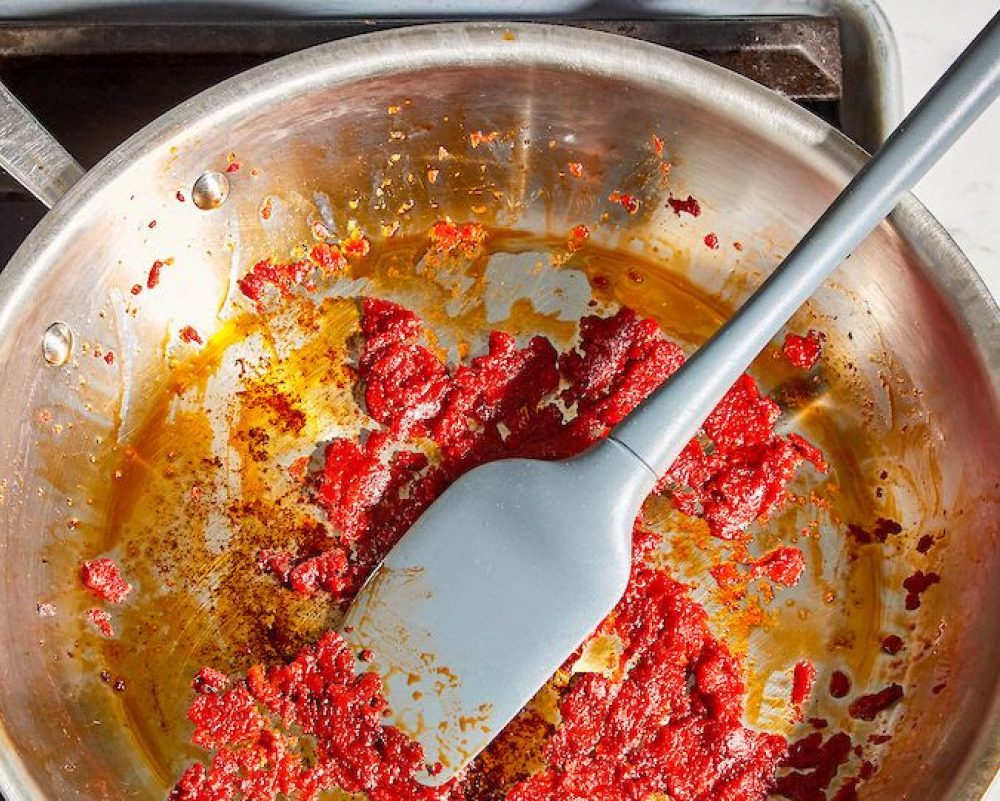Tomato paste is made from tomatoes that have been cooked down to remove most of the water. The result is a super concentrated puree of sweet, savory and tangy flavors. A dollop is an easy way to add depth to tomato-based sauces, soups, stews and braises.
But chances are, you are missing an easy opportunity to double its impact and transform it into a serious umami bomb. Adding tomato paste directly from the can to liquid ingredients is fine. But browning it first, much as you would onions at the start of a recipe, brings a whole new level of deep flavors.
It’s a trick we use in a trio of simple pastas: Pasta with Tomato, Garlic and Basil; Pasta with Tomato, Fennel and Anchovies; and Pasta with Tomato, Yogurt and Cumin-Spiced Butter.
Just as with meat and many vegetables, browning caramelizes the natural sugars in tomato paste and activates complex flavor compounds called glutamates, which produce umami richness.
Typically, you’ll want to brown your tomato paste in oil after you’ve sautéed any aromatics or spices. For most sauces and stews, cook the garlic, onion or other vegetables over medium-high until they start to soften and brown at the edges, then add the tomato paste and cook, stirring with a silicone spatula, until it darkens slightly and starts to stick to the pan. This should take about 5 to 7 minutes. Be sure to scrape the bottom of the skillet so it doesn’t burn. Then add any cooking liquid to deglaze the pan and continue cooking.
Though we generally prefer tomato pastes in tubes over canned varieties—which can have a metallic taste—they tend to be double- or triple-concentrated. When browned, those tomato pastes can be a little too potent for some recipes. Instead, when browning we favor classic Italian-made canned pastes.
Want to know more? Check out Milk Street Director of Education Rosie Gill demonstrating how easy this technique is on Instagram.
Join the conversation on Facebook, Twitter, Instagram and Pinterest.
And if you're looking for more Milk Street, check out our livestream cooking classes with our favorite chefs, home cooks and friends for global recipes, cooking methods and more.




